
The New York Hydropathic and Physiological School founded by Russell Thacher Trall on October 1, 1853, at 15 Laight Street, in New York City was a hydropathic and medical school known for its advocacy of natural therapies and vegetarianism.

The New York Hydropathic and Physiological School founded by Russell Thacher Trall on October 1, 1853, at 15 Laight Street, in New York City was a hydropathic and medical school known for its advocacy of natural therapies and vegetarianism.
The New York Hydropathic and Physiological School is chiefly notable today as one of the first medical schools in the United States to admit women candidates for the Doctor of Medicine degree. New England Female Medical College in Boston was the first, opening its doors in 1848. In 1855 the school graduated 50 physicians, "...about half of which were women." [1] By an act of the New York State Legislature in 1857 the school's name was changed to New York Hygeio-Therapeutic College and the school was authorized to confer the degree of Doctor of Medicine. [2] In 1858, the school graduated another 60 physicians, and again the number of female graduates was about half that number. [3] [4]
The school emphasized hydropathy, also known as the "water cure," vegetarian dietary therapies, sanitation, hygiene, exercise, and abandoning most of the materia medica used by allopathic physicians. [5] Founder Russell T. Trall was one of the first medical advocates of vegan nutrition [6] [7] The school moved to Florence, New Jersey by 1869 and continued in operation until 1875 when it was offered for sale. Trall died in 1877 and is buried in Florence, New Jersey. [8] [9] [10]
At the same address on Laight Street, Trall also operated The Hygienic Institute. [2] In the 1860s E. P. Miller was its proprietor and resident physician, whilst Trall remained consulting physician. Its female physician was Ellen Goodell Smith. [11] In 1864, it was reported that the institute had treated more than 10,000 patients. [11]

Hydrotherapy, formerly called hydropathy and also called water cure, is a branch of alternative medicine, occupational therapy, and physiotherapy, that involves the use of water for pain relief and treatment. The term encompasses a broad range of approaches and therapeutic methods that take advantage of the physical properties of water, such as temperature and pressure, to stimulate blood circulation, and treat the symptoms of certain diseases.

The Yale School of Medicine is the medical school at Yale University, a private research university in New Haven, Connecticut. It was founded in 1810 as the Medical Institution of Yale College and formally opened in 1813.

James Caleb Jackson was an American nutritionist and the inventor of the first dry, whole grain breakfast cereal which he called Granula. His views influenced the health reforms of Ellen G. White, a founder of the Seventh-day Adventist Church.
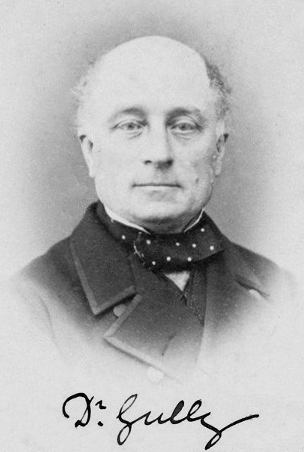
James Manby Gully was a Victorian medical doctor, well known for practising hydrotherapy, or the "water cure". Along with his partner James Wilson, he founded a very successful "hydropathy" clinic in Malvern, Worcestershire, which had many notable Victorians, including such figures as Charles Darwin and Alfred, Lord Tennyson, as clients.
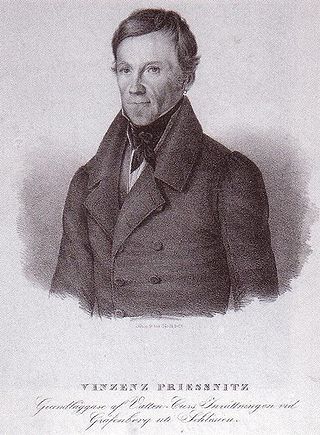
Vincenz Priessnitz, also written Prießnitz was a peasant farmer in Gräfenberg, Austrian Silesia, who is generally considered the founder of modern hydrotherapy, which is used in alternative and orthodox medicine. Priessnitz stressed remedies such as vegetarian food, air, exercise, rest, water, and traditional medicine. He is thus also credited with laying the foundations of what became known as Nature Cure, although it has been noted that his main focus was on hydrotherapeutic techniques. The use of cold water as a curative is recorded in the works of Hippocrates and Galen, and techniques such as spas, bathing, and drinking were used by various physicians in Europe and the US through to the 18th century. The practice was becoming less prevalent entering the 19th century however, until Priessnitz revived the technique after having major success applying it on patients in his spa in Gräfenberg. Priessnitz's name first became widely known in the English-speaking world through the publications and lecture tours of Captain R. T. Claridge in 1842 and 1843, after he had stayed at Grafenberg in 1841. However, Priessnitz was already a household name on the European continent, where Richard Metcalfe, in his 1898 biography, stated: "there are hundreds of establishments where the water-cure is carried out on the principles laid down by Priessnitz". Indeed, Priessnitz's fame became so widespread that his death was reported as far away as New Zealand.
Orthopathy or natural hygiene (NH) is a set of alternative medical beliefs and practices originating from the Nature Cure movement. Proponents claim that fasting, dieting, and other lifestyle measures are all that is necessary to prevent and treat disease.
Captain Richard Tappin Claridge, FSA, was a prominent asphalt contractor and captain in the Middlesex UK Militia, who became best known for his prominent promotion of hydropathy, now known as hydrotherapy, in the 1840s. It was also known as the Cold Water system or Cold Water cure.[b] Claridge is widely credited with introducing the methods of Vincent Priessnitz to England, thus initiating the populist movement of the time.[c] Indeed, much of what is popularly known about Priessnitz in the English-speaking world comes from two seminal publications. Firstly, Claridge's Hydropathy; or The Cold Water Cure, as practised by Vincent Priessnitz.... Secondly, Richard Metcalfe's Life of Vincent Priessnitz (1898), with Metcalfe himself drawing upon Claridge, although Metcalfe also later wrote a historical overview and added more about Claridge and his role in the promotion of hydropathy.
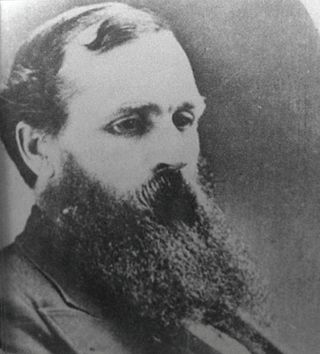
Gideon Allen Weed born in New Jersey, Weed was a two-time mayor of Seattle, Washington from 1876 to 1878, first elected in 1875, and serving as an independent.
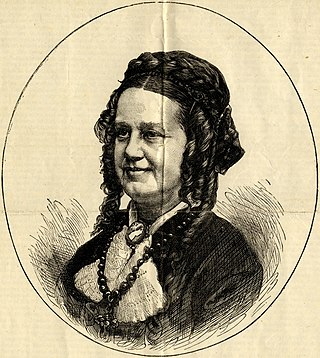
Lydia Folger Fowler was a pioneering American physician, professor of medicine, and activist. She was the second American woman to earn a medical degree and one of the first American women in medicine and a prominent woman in science. She married a phrenologist and her daughter, Jessie Allen Fowler, continued their ideas.
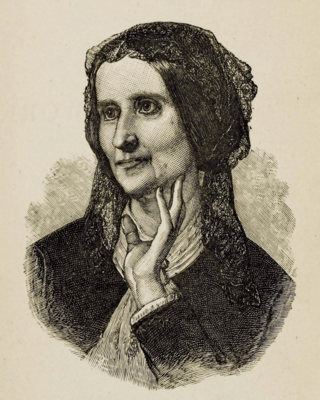
Mary Sargeant Gove Nichols, also known by her pen name Mary Orme, was an American women's rights and health reform advocate, hydrotherapist, vegetarian and writer.
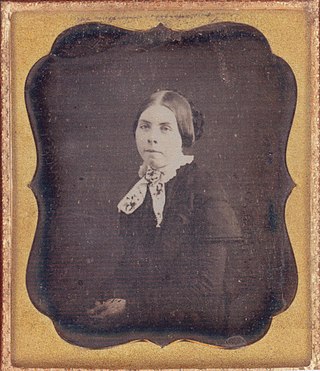
Helen Walker McAndrew was a Scottish-American doctor and the first documented female physician in Washtenaw County, Michigan. According to some sources, she was also the first female physician in the U.S. state of Michigan.

Russell Thacher Trall was an American physician and proponent of hydrotherapy, natural hygiene and vegetarianism. Trall authored the first American vegan cookbook in 1874.
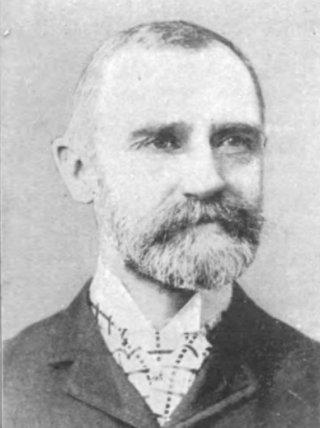
Charles Edward Page, was an American physician, hydrotherapist, natural hygiene advocate and anti-vaccinationist.
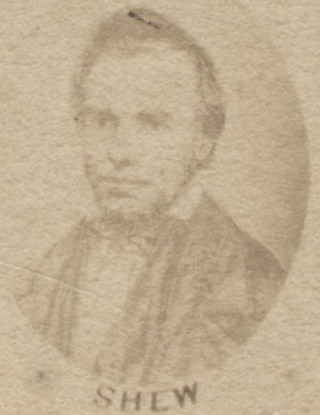
Joel Shew was an American physician, hydrotherapist and natural hygiene advocate.
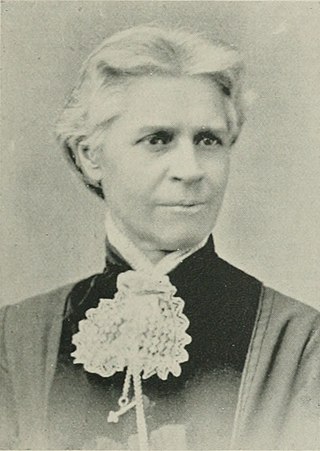
Susanna Way Dodds was an American physician, hydrotherapist and natural hygiene proponent.
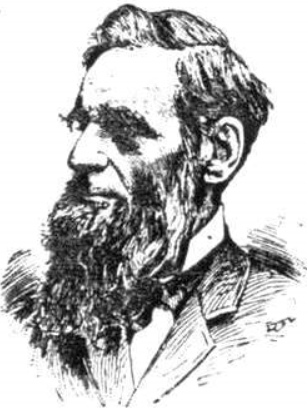
George Herbert Taylor was an American physician and inventor associated with the natural hygiene and physical culture movements. He was known for his practice of homeopathy and introducing Swedish massage to the United States.
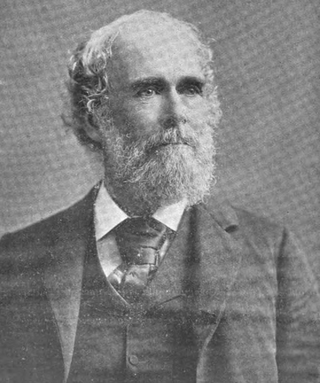
Martin Luther Holbrook was an American physician and vegetarianism activist associated with the natural hygiene and physical culture movements.
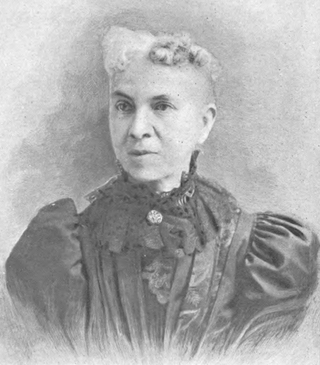
Ellen Goodell Smith was an American hydropathic physician, vegetarian and writer.
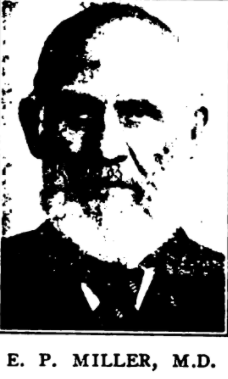
Eli Peck Miller, best known as E. P. Miller was an American physician, hydrotherapist, vegetarian and natural hygiene advocate.

Archibald Hunter was a Scottish hydrotherapist, naturopath and writer.